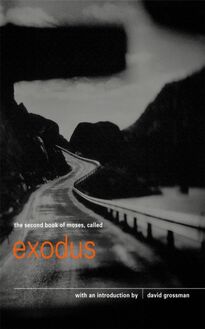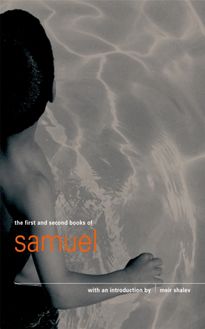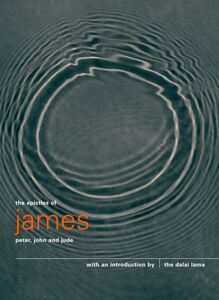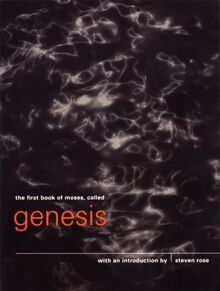Song of Solomon , livre ebook
22
pages
English
Ebooks
1999
Vous pourrez modifier la taille du texte de cet ouvrage
Obtenez un accès à la bibliothèque pour le consulter en ligne En savoir plus
Découvre YouScribe et accède à tout notre catalogue !
Découvre YouScribe et accède à tout notre catalogue !
22
pages
English
Ebooks
1999
Vous pourrez modifier la taille du texte de cet ouvrage
Obtenez un accès à la bibliothèque pour le consulter en ligne En savoir plus
Publié par
Date de parution
01 janvier 1999
Nombre de lectures
3
EAN13
9780857860958
Langue
English
Contents
Title Page a note about pocket canons introduction by a s byatt the song of solomon 2 3 4 5 6 7 8 titles in the series About the Author Copyright
a note about pocket canons
The Authorised King James Version of the Bible, translated between 1603–11, coincided with an extraordinary flowering of English literature. This version, more than any other, and possibly more than any other work in history, has had an influence in shaping the language we speak and write today. Presenting individual books from the Bible as separate volumes, as they were originally conceived, encourages the reader to approach them as literary works in their own right.
The first twelve books in this series encompass categories as diverse as history, fiction, philosophy, love poetry and law. Each Pocket Canon also has its own introduction, specially commissioned from an impressive range of writers, which provides a personal interpretation of the text and explores its contemporary relevance.
introduction by a s byatt
The Song of Songs is a cry of erotic longing and a description of erotic bliss. It is a lyrical drama whose speakers and episodes run into each other as in a dream or a vision. There is a female voice, which is both virginal and knowing, triumphant and lost. There is a male voice, impatient, exulting, wooing. There is a chorus of unseen commentators, and other groups, the women of Jerusalem, the watchmen, the threescore valiant men who stand around the bed of Solomon. The scene shifts from walled garden to walled city to green bedchamber to the mountains. The woman is black but comely; the man is white and ruddy, with a head like fine gold and with bushy locks, black as a raven. The ending is abrupt and the story is fragmentary. It is a canonical biblical text, and yet there is no mention of God or of religion. It haunts many cultures, eastern and western.
It was ascribed, along with Ecclesiastes and Proverbs , to King Solomon, son of David. Solomon, according to The Book of Kings , had ‘seven hundred wives, princesses, and three hundred concubines’; he was famous both for his wisdom and his lechery. The Song was thought to refer to his marriage with the daughter of Pharoah, or to his fabled meeting with the Queen of Sheba, who tested him with riddles, the answers to which were to do with the bodies of women. * Jewish commentators saw the woman as Israel, black with her sins; the reading of the Song was prescribed during the festival of the Passover. The Fathers of the Christian church were perturbed by its erotic charge, its voluptuous incitation. They assumed that a sacred text must have a spiritual meaning. As Origen wrote in the third century, ‘If these things are not to be understood spiritually, are they not simply fabulous tales? If they have no hidden mystery, are they not unworthy of God?’ The Song became part of an intricate web of allegorical readings of Scripture. These readings constructed both the theology and the poetry of a religion centred on the historical incarnation of the eternal and spiritual. The Song became also an extraordinary paradox – a rich, fleshy metaphor for the divine longing that would cause the wise soul to reject the flesh and its desires. Origen’s explication turned on the doubleness of the Latin word, amor , love, which was used to describe carnal desire and spiritual yearning. Origen himself went as far as self-castration in his search for pure spiritual love. He allegorised the Bride’s withdrawal into the marriage chamber as the withdrawal of the pure soul from all extraneous earthly desires.
Origen identified the Bride with Ecclesia, the embattled, sinful Christian church, who had to learn to respond to the loving care and demands of her Divine Spouse, Christ. The Song ’s imagery of the bridegroom knocking at a locked door, the bride waking too late, became assimilated to Christ’s own parable of the sleepy, unwatchful bridesmaidens. In the twelfth century commentators interpreted the Song in terms of the Virgin Mary, the Mother-Bride, the sister-spouse, the mediator. The allegory had for them a literal historical meaning, to be teased out. The Bride also became the Hetaira, romantic heroine and childlike maiden, wooed by Christ the very perfect knight. Poems about Mary Magdalene, repentant beauty, spiritual sinner, who broke an alabaster vase of precious ointment over her Lord’s feet, used the imagery of the Song . The spiritual interpreters, most strikingly St Bernard of Clairvaux, in his sermons on The Song of Songs , saw the individual human soul itself as the Beloved, drawn towards Christ initially through love of the created world. The Latin word for the soul is anima , which is a feminine word, and it is striking that the allegorical commentaries and interpretations of the Song written by celibate monks, take the passive, open, receptive female consciousness as the central consciousness of the drama. The human soul, male or female, in this erotic mysticism, is a woman waiting for her master, her lord, her bridegroom. The saint’s rhetoric, like his vision of the Song , includes the erotic, lingers over it, only to dismiss it.
You must not give an earth-bound meaning to this colouring of corruptible flesh, to this red liquid suffused beneath her pearly skin, to enhance her bodily beauty in the pink and white loveliness of her cheeks. For the substance of the soul is incorporeal and invisible …
Or
Shall we imagine for ourselves a huge powerful man, gripped by love for an absent girl, rushing to her desired embraces, bounding over those mountains and hills which we see raised up so high over the plain that their summit seems to penetrate the clouds? It is certainly not proper to fabricate bodily fantasies in this way, and especially when treating of this spiritual Song … *
And St Bernard, preaching to the abbots of his order, on ‘remembering the breasts’ makes them into imagined women and mothers: ‘Be gentle, avoid harshness, give up blows, show your breasts: let your bosoms be fat with milk, not swollen with wrath.’
The fathers of the church were preaching an incarnate God to an incarnate congregation, creatures made up of flesh and spirit. They could rationalise their treatment of The Song of Songs – which is not a rational structure – by saying that its inspired author had used the language of the flesh to entice the incarnate souls to the love of the Incarnate Word, speaking through the flesh. Their ingenuity and resourceful reconstructions and deconstructions can seem both beautiful and absurd to an unbeliever seduced and baffled by the literal presence of the Song itself. Is it the nature of the text or the nature of the theology that brings about all the building of these airy places, such a reader may ask her or himself.
The Jungians, as we might expect, have an answer. They are drawn to the Song by the presence of the woman and the idea of a marriage. The female persona in the story, or stories, can be seen as the Jungian anima , the complementary female self who must be integrated into the psyche for wholeness. The four major feminine archetypes of Jungian psychoanalysis – Virgin, Mother, Medial Woman and Hetaira – can all be found easily in the Song . A Jungian reading of the Song includes the alchemical Coniunctio, the mystical marriage of opposites. In alchemical terms the Shulamite’s blackness signifies the ‘feminine personification of the prima materia in the nigredo stato’. Jung quotes alchemical texts in which the Shulamite attributes her blackness to the original sin of Eve: ‘O that the serpent roused up Eve! To which I must testify with the black colour that clings to me.’ * ‘She is the anima mundi or Gnostic Sophia, caught in the dark embraces of physis .’ Here is a psychoanalytical and alchemical version of the interpretative anxiety about incarnation, spirit and matter. It leads to a consideration of the extraordinary proliferation of quotations, objects, metaphors from the Song throughout many centuries and literatures.
Ann Astell gives some beautiful examples of love lyrics, sacred and profane, from the Middle Ages. I myself found The Song of Songs everywhere in the thesis I never finished, which was about sensuous metaphors for the spiritual in the seventeenth century, and turned out to be about narratives of fleshly temptations in gardens, from Spenser’s ‘Bower of Bliss’ to P














